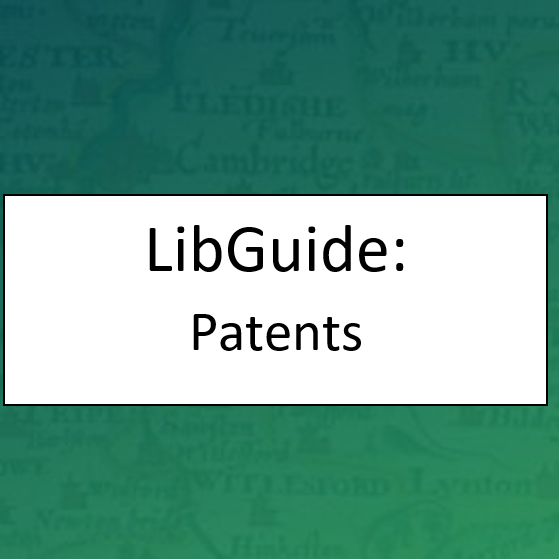There is an excellent Patents LibGuide produced by Cambridge Libraries that provides comprehensive information on patents.
On this page:
What is a patent?
According to the British Library's guide, Brief introduction to patents, a patent protects new inventors and covers how things work, what they do, how they do it, what they are made of and how they are made. A patent gives the owner the right to prevent others from making, using, importing or selling the invention without permission.
To be patentable an invention must be, among other things, new, innovative, better or cheaper or different to anything that has been done before. You should search to ensure that your idea has never been done before. This is referred to as 'prior art or novelty searching'.
How do I search for patent information?
There are a number of free databases on the web that can be used for prior art or novelty searching. Some university subscribed databases also cover patent information. The databases provide the full text of patents, and/or patent citations or patent application information. The patent information covered is often derived from patent offices worldwide. The patent information can be searched for and viewed in different ways according to the conventions used by the database; see the Help/Support section of the database site for guidance.
The Lens Institutional Toolkit covers over 100 million patent documents from around the world. It provides access to nearly all of the patent documents in the world as open, annotatable digital public goods that are integrated with scholarly and technical literature along with regulatory and business data. All Institutional Users (e.g. staff and students at the University of Cambridge) can also access an Institutional User API Plan while logged in as an institutional user. Register for an account with your Cambridge email for institutional user access to the API.
See the Patents LibGuide for an A-Z selection of other free patent search tools.
Betty & Gordon Moore Inter-Library Loan service for sourcing patents
The Moore Library's Inter-Library Loan service can be used for making requests for international and UK patents. This part of the service is not subsidised and readers will be expected to meet the cost of such requests in full.
Free sources - try these to get the full text for free
Espacenet offers free access to more than 70 million patent documents worldwide, dating from 1836.
Patentscope is a World Intellectual Property Organisation (WIPO) database which allows access to millions of patent documents namely International Patent Applications under the Patent Cooperation Treaty (PCT) plus regional and national patent collections from 38 participating authorities.
USPTO is the website of the US Patent and Trademark Office and allows searching of US national utility patents and design patents.
There many more sources. WIPO has a list of national patent databases on the web.
British Library Business & IP Centre
The British Library holds the national collection of intellectual property not only from the United Kingdom but also from a large number of countries throughout the world. The Business & IP Centre has extensive collections of business and Intellectual property information, plus databases. Manuals on Intellectual Property law are on the open access shelves. See their Brief introduction to patents guide.
For a fee, the British Library can carry out a search and compile a list of potentially relevant patents. It can also search in Web-based sources for relevant prior art in non-patent literature.
University subscribed databases
Reaxys includes 'historical' and 'in-depth' patent information. Historical patent information covers patents from 1803 to about 1980 and the information abstracted includes substance and reaction data, patent citation such as asignee, patent number, year, and country code. Mostly organic chemistry is covered. In-depth patent information covers patents from 1976 onwards. They are English language patents from world, U.S. and European patent offices. They additionally contain all patent family members (all patent numbers and application numbers for an indexed patent). Markush substance display, prophetic substances, and patent classification codes. Organic, inorganic, and organometallic chemistry is covered.
There are 25.2 million patent records available in Scopus derived from five patent offices:
1. World Intellectual Property Organization (WIPO)
2. European Patent Office (EPO)
3. US Patent Office (USPTO)
4. Japanese Patent Office (JPO)
5. UK Intellectual Property Office (IPO.GOV.UK)
Having performed your document, author, or affiliation search, click on the Patents tab to view patents in the area related to your search results. Click on Patent title to view the details. If a research paper was cited by patents, total citation counts would be captured under 'Other citing sources'. Click on the citation count for details.
How do I cite patents?
The University has an online subscription to Cite them right which helps you to reference just about any source, including patents. How to Cite a Patent also has links to show how to cite a patent in different citation formats
Want to know about trademarks?
See the Chemistry Library website for Trademarks.



